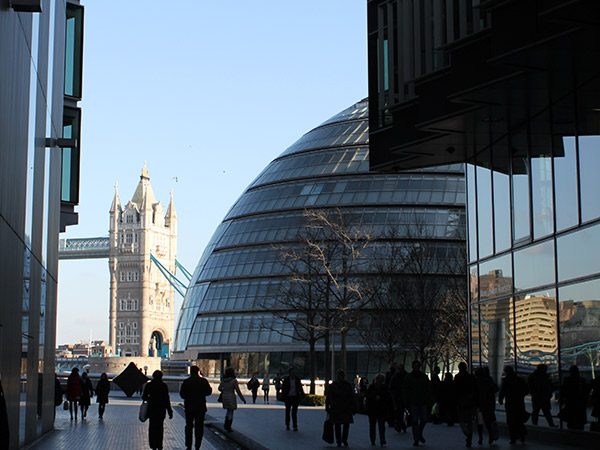The design team at the Greater London Authority are tasked with engaging the capital’s eight million residents with everything the mayor’s office is doing. Its four staff are based on the fifth floor of City Hall next to the Thames, ‘in the closest thing it‘s possible to get to a corner in a doughnut shaped building.’ Tom Lancaster, head of design at the GLA, on...
The mechanics of idea generation... It’s important to have all the creative team together in one studio space - rather than spotted around the office, surrounding ourselves with the work we've done and the stuff we're developing, and getting all designers involved in each project to get as many ideas as possible.
The particular pressures of working in the public sector... In the public sector there’s a myriad of partners and stakeholders, often with varying interpretations of who's responsible for what and a love of time-eating meetings.
I would say the perception of the public sector culture being quite drab is fair. There is a lot of bureaucracy and and a lot of doing things a certain way because that’s always the way they’ve been done. Without the bottom line of profit to determine success – which would naturally slim down the volume of propositions we work on – there's a huge amount to communicate in a clear way. It's easy for that to all become noise.
There’s a fear of accountability in the public sector which can make people scared to take a risk. It is a challenge but as designers we are involved with some amazing things and we have to work hard to get that magic across.
Because the mayor’s office is responsible for so many things you naturally have a plethora of briefs. On the one hand that means you don’t overthink things but on the other hand it would be lovely to have a bit more time sometimes. It’s a difficult balance. You don’t have much down time and that can make it difficult to learn from the evaluations because by the time that comes back, you’re quite far down the line with the next thing. There’s such a huge value in stepping back and reviewing what really resonated.
In a perfect world it would be great to be able to focus on quality rather than quantity – making more time to produce fewer outputs so they can be crafted into something special rather than just functional.
How to maintain diversity and energy working for one client... We try to section off the different parts of the wider brand and give each one a separate look within our overall guidelines. So we make the meet-the-mayor type events quite serious with black and white photography but the big public events like the New Year’s Eve fireworks we make much more bold and light and fun.
There’s lots of different propositions – one day you might be working on something very down-to-earth like volunteering, then it’s the fourth plinth art project. We always do our best to give all the different areas treatments that are individual.
The pressures of designing for London... In the past there’s been a perception that if something’s public sector it’s an excuse to be quite poor. We try very hard to work against that. London is one of the busiest media landscapes going so we talk in a clear consistent way and use design to get cut though. We try to design timeless comms that resurface the best bits of London’s visual heritage – whether it's nicely spaced upper case heading, just like a tube station name sign, or spare graphic illustration.
The ideal studio... Creative types working together, lots of natural light, big tables and bigger cork boards, music, magazines and an up-to-date work plan! I’d combine the amazing setting by the river of City Hall, the music and noise from the old Orange office and the no-nonsense attitude of Clear Channel – if a Mac broke there you got a new one the next morning.
